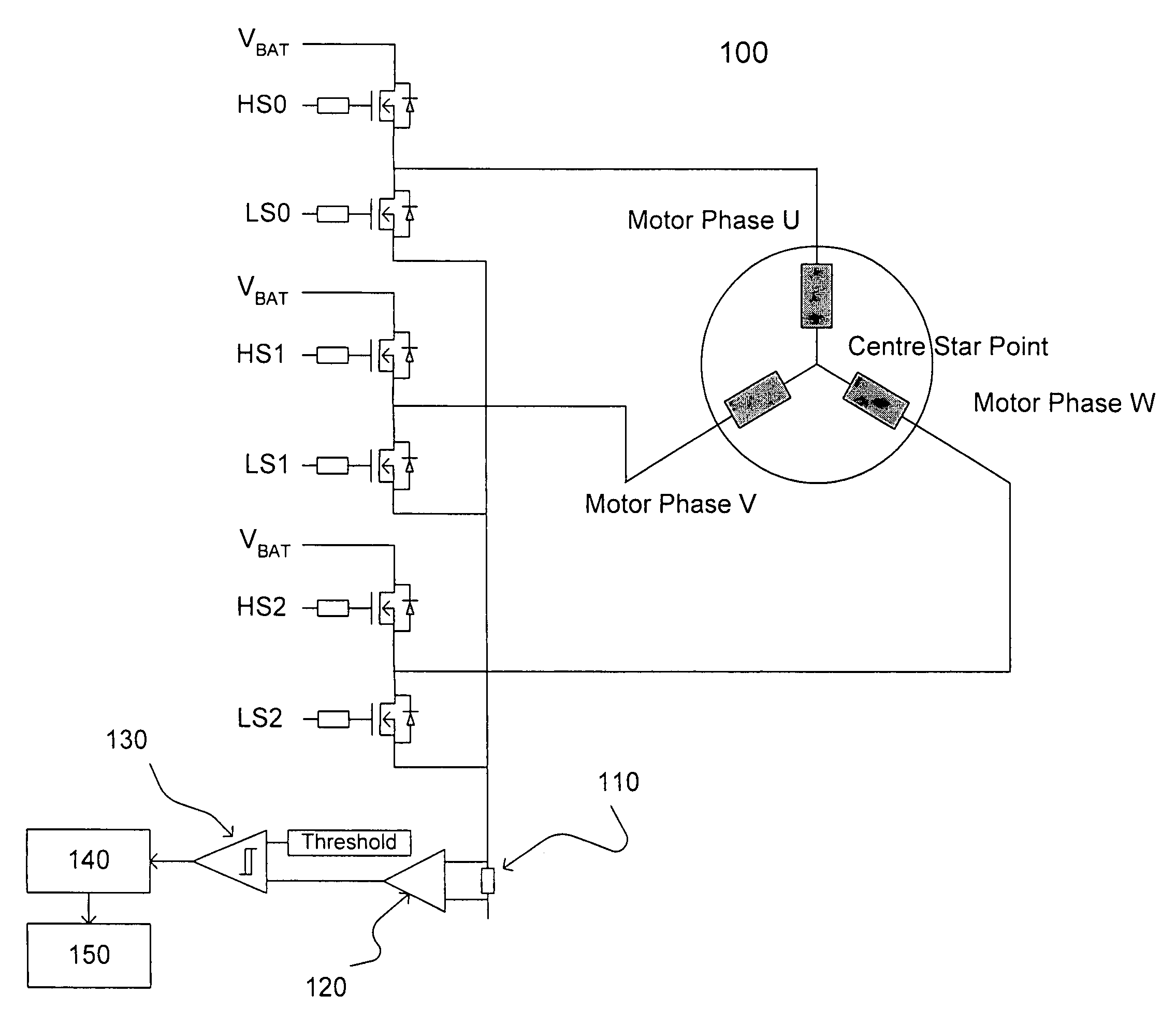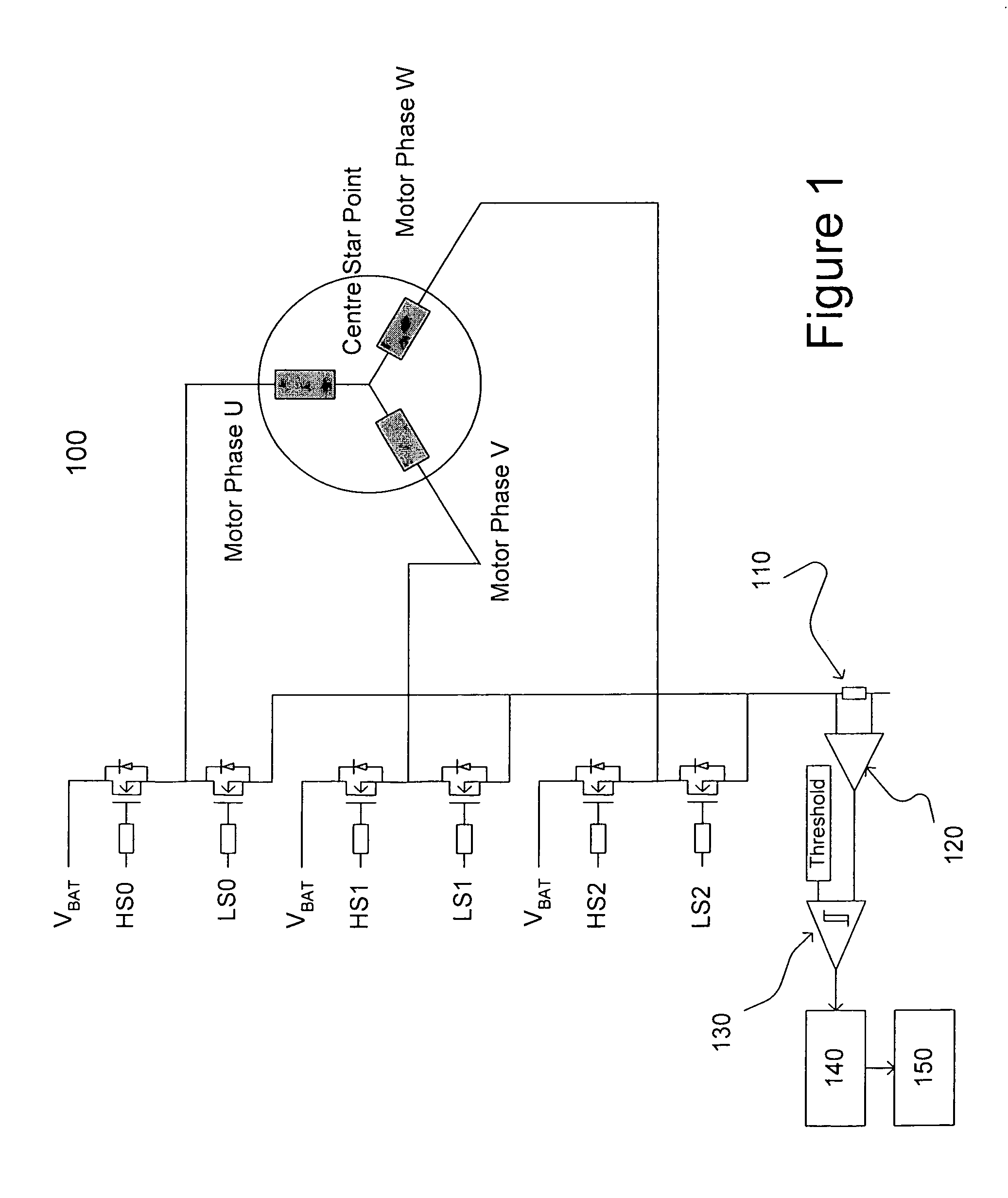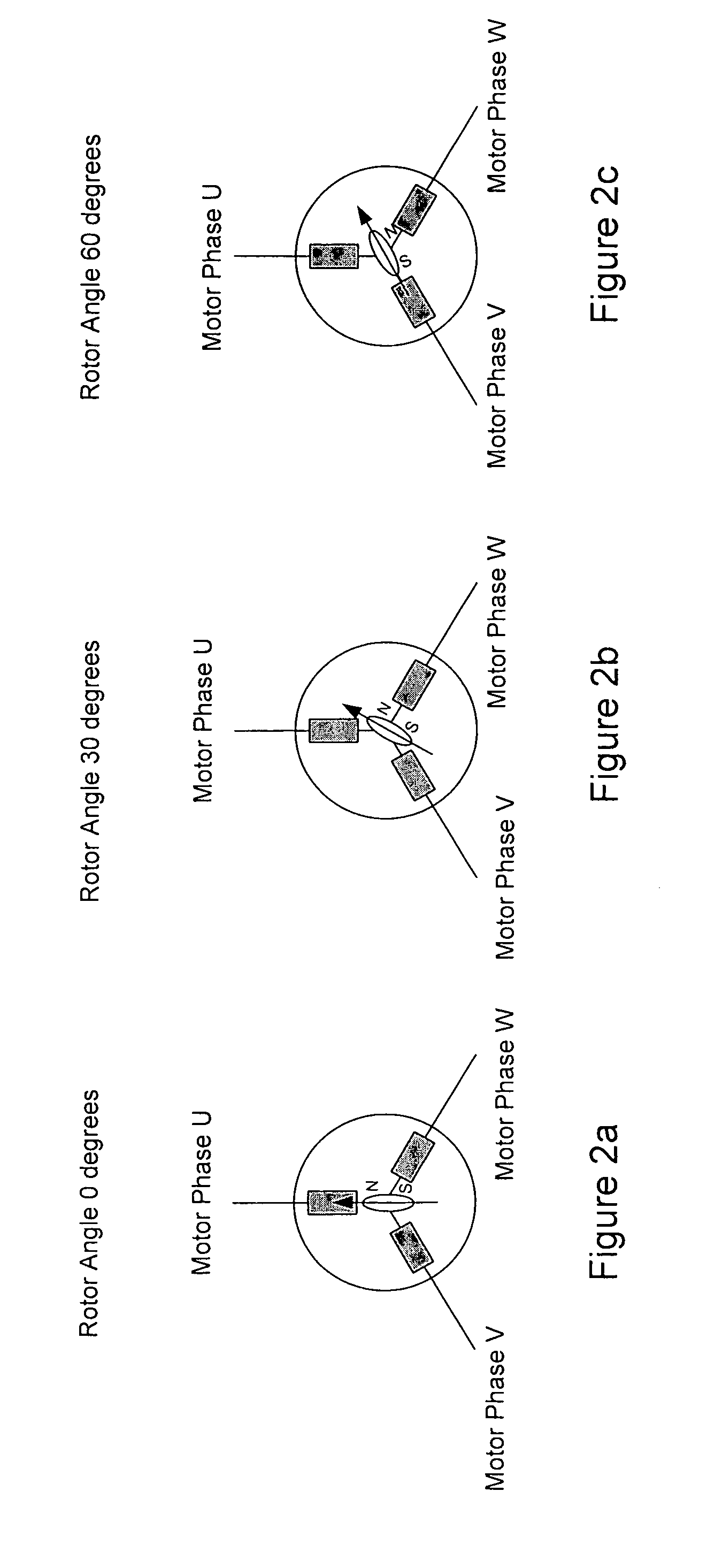Rotor orientation detection in brushless DC motors
a brushless dc motor and rotor orientation technology, applied in the direction of motor/generator/converter stopper, electronic commutator, dynamo-electric converter control, etc., can solve the problem of increasing the possibility of error, not being able to monitor an induced back emf, and being more susceptible to nois
- Summary
- Abstract
- Description
- Claims
- Application Information
AI Technical Summary
Benefits of technology
Problems solved by technology
Method used
Image
Examples
Embodiment Construction
[0020]Referring now to FIG. 1, a brushless DC motor 100 comprises three stator phases U, V and W. The stator phases U, V and W are connected together at a central star point and are connected separately to driving electronics at a phase pin: stator phase U being driven via drivers HS0 and LS0; stator phase V being driven via drivers HS1 and LS1; and stator phase W being driven via drivers HS2 and LS2. In the present example, when the respective HS drivers are activated, a current flows in the respective stator phase in the direction from the star point to the phase pin (defined as a negative direction for the purposes of the present description). Conversely, when the respective LS drivers are activated, a current flows in the respective stator phase in the direction from the phase pin to the star point (defined as a positive direction for the purposes of the present description).
[0021]In order to determine the orientation of the rotor, a sequence of current pulses may be applied to ...
PUM
 Login to View More
Login to View More Abstract
Description
Claims
Application Information
 Login to View More
Login to View More - R&D
- Intellectual Property
- Life Sciences
- Materials
- Tech Scout
- Unparalleled Data Quality
- Higher Quality Content
- 60% Fewer Hallucinations
Browse by: Latest US Patents, China's latest patents, Technical Efficacy Thesaurus, Application Domain, Technology Topic, Popular Technical Reports.
© 2025 PatSnap. All rights reserved.Legal|Privacy policy|Modern Slavery Act Transparency Statement|Sitemap|About US| Contact US: help@patsnap.com



